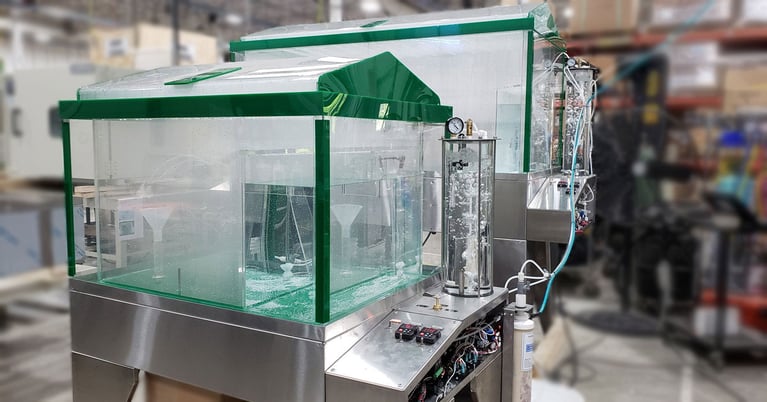The Importance and Purpose of Salt Spray Test Chambers

Corrosion is inevitable. Environmental factors, including moisture, temperature, and acidity, as well as the presence of salt, cause corrosion all around us. While it can’t be permanently stopped, it can be slowed down. Through salt spray testing, industries can determine how corrosion-resistant a material, product, component, or coating is. These innovative environmental testing chambers give insight into performance and direction for designing a better solution.
Salt spray testing, also known as salt fog testing, can benefit numerous industries, from marine to water to consumer electronics. Since those industries primarily create products used for the outdoors, it’s highly beneficial for those companies to understand how the elements impact their products. Learn more about salt spray testing and how Associated Environmental Systems (AES) can support your needs.
How Corrosion Impacts Our Lives
Corrosion can dramatically affect every one of us. For drivers in colder climates, vehicle corrosion can be a constant struggle. The buildup of salt on winter roads can lead to rusted-off running boards and damaged exhaust systems, all of which pose a threat to the safety of the driver and others on the road. Drivers find themselves paying for thousands of dollars worth of repairs just to maintain the longevity and safety of their cars. These side effects challenge automotive companies to create corrosive-resistant parts, so they look to salt spray testing chambers to guide their product creation.
The threat of corrosion spreads even to U.S. drinking water. While towns and cities across the U.S. spend billions of dollars each year to clean water sourced from rivers, lakes, and underground aquifers, if water travels through corroding pipes, this causes a water crisis. As pipes corrode, not only does water escape, but also diseases and lead can get in the water. With this daily hurdle before U.S. water companies, they turn to a salt spray testing chamber to help create systems that will combat corrosion.
Salt Spray Tests & Cyclic Corrosion Testing
Salt spray testing is an intricate process, and it’s important to understand how it works. To begin, the “spray” itself usually comes in the form of a fog or super fine mist that creates an environment that accelerates corrosion. This condition is also isolated by controlling the ambient temperature at 95°F (35°C) and the pH level of the water. Specific materials that may be tested include the following:
- Phosphate surfaces with subsequent paint, primer, lacquer, or rust-preventive
- Zinc and zinc-alloy plating
- Electroplated chromium, nickel, copper, and tin
- Coatings not applied electrolytically, such as zinc flake coatings
- Organic coatings
- Paint coatings
To gain a more comprehensive understanding of how a product or component will resist corrosion in real-world environments, you’ll need to conduct what’s known as a cyclic corrosion test. This test aims to assess when a product fails in a controlled environment, which helps set expectations for consumers or determine the need for further testing. Users cycle DUTs through higher temperatures, then lower temperatures to simulate accelerated time passing.
Cyclic corrosion tests are essential for companies in the marine industry. Metal parts underwater are subjected to both galvanic corrosion and stray current corrosion. These forms of corrosion can greatly harm your boat, propeller, and motor if not correctly monitored and avoided. To identify just how long the boat or motor will remain effective while facing electrochemical reactions, a cyclic corrosion test can provide reliable insight. As a result of the test, companies can design corrosion-resistant parts.
Choose AES for Your Salt Spray Testing Needs
For your next salt spray test chamber purchase, partner with AES. Our unique MX Series includes chambers that feature two sensors, one that maintains the MX tower temperature and the other that maintains the internal working volume temperature. The MX Series, with plexiglass on all sides, is also the only chamber on the market that offers users a 360-degree view of the test workspace. You can easily observe the DUT while simultaneously analyzing the data with AESONE CONNECT instrumentation.
Apart from delivering your salt chambers, AES can provide ongoing maintenance services. Our team will give you instructions on how to clean the tower and assemble the syphon tube. Salt can build up and impede the chamber's function if not cleaned properly. Give us a call today at 1-978-707-6652 to learn more and get started.


